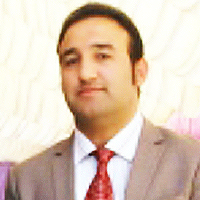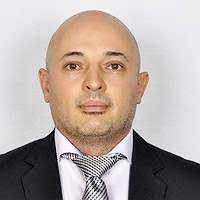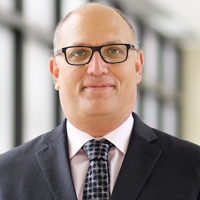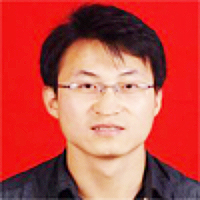Most Comparative Study of Cerebral Volumetric Variations in Patients with Schizophrenia with their Unaffected First-degree Relatives, using Magnetic Resonance Imaging Technique, a Case-control Study
Published on: 3rd January, 2024
Background and purpose: Schizophrenia (SZH) is a chronic mental disorder affecting the individuals` thoughts, perceptions, emotions, and behaviors. People with SZH may experience a wide range of positive, negative, and cognitive symptoms. Since there are no laboratory assays for definite SZH diagnosis, the authors aimed to identify the cerebral volumetric variations in SZH patients with the most prevalent positive symptoms as a diagnostic tool. This study selected 15 SZH patients displaying the most prevalent positive symptoms based on the Diagnostic and Statistical Manual of Mental Disorders (DSM-5) criteria. Assessment tools included the Mini-Mental State Examination (MMSE) for cognitive impairment, the Positive and Negative Syndrome Scale (PANSS) for symptom evaluation, and the Wechsler Intelligence Scale (WIS) for intelligence assessment. Additionally, 15 Healthy Controls (HC) without cerebral pathologies were recruited. T1w MRI images underwent analysis using Freesurfer software. Data analysis employed Mann-Whitney U and χ² tests, considering p < 0.05 as significant.Results: SZH and HC groups showed no significant differences in age and gender. However, significant (p < 0.05) alterations in Gray Matter (GM) volume were observed in SZH patients compared to HC. In the right hemisphere, several regions exhibited volume reduction, including the Fusiform sulcus, Rostral middle frontal gyrus, isthmus cingulate, Frontal pole, Middle temporal gyrus, Lateral occipital gyrus, and Inferior Parietal gyrus. Notably, the Precentral sulcus and Postcentral gyrus demonstrated volume acceleration. Similarly, in the left hemisphere, various regions showed volume reduction while the Paracentral gyrus indicated volume acceleration, all significant (p < 0.05).Conclusion: SZH patients display significant volumetric brain changes, indicating potential for future diagnostic procedures in SZH.
Towards A 21st Century Systematize the Ideas; COVID-19, Sustainability and Discourse of SDG, (Sustainable Development Goals), The Cities and Housing Models
Published on: 12th February, 2024
The research creates a theoretical basis for examining the metamorphic changes and transformations in urban and housing planning with the interaction created by the latest epidemic in the world, which is moving towards a period related to climate problems. The first quarter of the 21st century witnessed an unexpected event: Humanity found itself in the middle of a pandemic considered temporary, it would be permanent and change the world dramatically. The post-COVID-19 period has led to significant and permanent changes in our lives, from urban planning to housing typologies. The study aims to understand the changing dynamics in the post-pandemic period that converges on the same goal with SDG, (Sustainable Development Goals), as continuity by updated dialogues, and discourses on literature. This research focuses on the SDG, (Sustainable Development Goals), and the post-pandemic period, analysis of two phenomena separated, analogous paradigms or intertwined. The findings of the public perception are there is a distinction between sustainability and pandemics considered dissimilar processes, they contain similarities. Contrary to common ideas, the pandemic was a catalyst for sustainability, and these two concepts contain analogous ideas and principles. In conclusion, it is revealed that they both concentrated on similar ideas; SDG, (Sustainable Development Goals) is “health”, and pandemic is the “healthy city” concept like; clean air, zero carbon, living healthy and safely in airy and green areas, etc.
A Strength-based Approach to Achieving Academic Success for Individuals with Autism Spectrum Disorder (ASD)
Published on: 14th February, 2024
Qualitative research enabled us to explore the personal perceptions and institutional factors that facilitated academic success, as well as challenges, of a sample of 40 academically talented students with autism spectrum disorder (2e/ASD) who were enrolled in highly competitive colleges and universities in the United States. We explored their high school academic and social experiences, their college transition, parental views of their talents and disabilities, as well as college service providers’ opinions about their academic progress and needs. We identified some specific strength-based teaching and instructional strategies and academic experiences that students reported as contributing to their academic success during high school including challenging and advanced classes, use of strengths-based learning strategies (like independent study, and positive relationships with teachers and counselors. We also found that the level of disability support offered by the college was an important consideration for the academic success of this population, as was an understanding of the laws and regulations that apply and don’t apply when students with disabilities attend college.
Time Electron Theory
Published on: 5th April, 2024
What is time? Is it a physical quantity, illusion, or dimension? Defining time is challenging and fascinating. We often consider time as a dimension to help us understand the concept of space-time. Time undeniably exists, but we can only sense its presence through its effects. For instance, if we take two apples, one bought months ago and the other just a day ago, we can tell that one apple was bought a long time ago because it had rotted. We express time as the effect caused by it. If there were no effects of time on this universe, then the concept of time would not exist [1,2].
Breast Cancer in Female
Published on: 22nd April, 2024
Anxiety is also a very common disorder, both in patients and their family members. Anxiety and stress can compromise the quality of life of cancer patients and their families. Feelings of anxiety and anguish can occur at various times of the disease path: during screening, waiting for test results, at diagnosis, during treatment or at the next stage due to concern about relapses. Anxiety and distress can affect the patient’s ability to cope with diagnosis or treatment, frequently causing reduced adherence to follow-up visits and examinations, indirectly increasing the risk of failure to detect a relapse, or a delay in treatment; and anxiety can increase the perception of pain, affect sleep, and accentuate nausea due to adjuvant therapies. Failure to identify and treat anxiety and depression in the context of cancer increases the risk of poor quality of life and potentially results in increased disease-related morbidity and mortality [1]. From all this we deduce the need and importance of dedicated psychological and psychiatric support for these patients within the Breast Unit. The fact that the psycho-oncologist who is dedicated to the care of patients with breast cancer must be an integrated figure in the multidisciplinary team of the Senological Center and not an external consultant is enshrined in the same European Directives that concern the legislation concerning the requirements that a Breast Unit must have in order to be considered a Full Breast Unit (Wilson AMR, et al. 2013).One of the most complex situations you find yourself dealing with is communication with the patient. This communication is particularly complex in two fragile subpopulations that are represented by women. [Menditto L. T (Tirannie) Cancer of the Breast. Am J Psychol & Brain Stud, 2023; 1(1):26-30].
Advancing Oral Health and Craniofacial Science through Microchip Implants
Published on: 25th April, 2024
Microchip implants have emerged as transformative tools in the realm of oral health and craniofacial science, offering novel solutions to longstanding challenges. This paper aims to explore the diverse applications of microchip technology in dentistry and craniofacial medicine, envisioning a future where these implants play a pivotal role in diagnostics, treatment modalities, and ongoing patient care. The integration of microchips enables real-time monitoring of oral conditions, facilitating early detection of dental issues and providing personalized treatment strategies. Additionally, these implants open avenues for smart prosthetics and orthodontic devices, optimizing patient comfort and treatment outcomes. However, ethical considerations, patient perceptions, and the societal impact of such technology should also be addressed. By examining the multifaceted implications and applications of microchip implants in oral health and craniofacial science, this research overview seeks to contribute valuable insights to the intersection of technology and healthcare in the dental domain.

HSPI: We're glad you're here. Please click "create a new Query" if you are a new visitor to our website and need further information from us.
If you are already a member of our network and need to keep track of any developments regarding a question you have already submitted, click "take me to my Query."
















